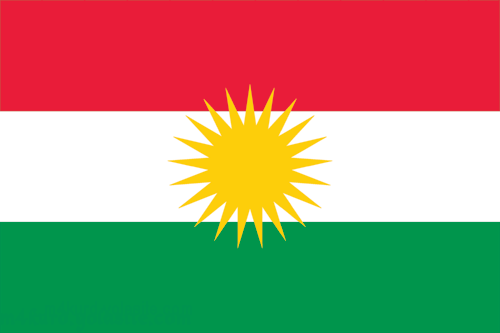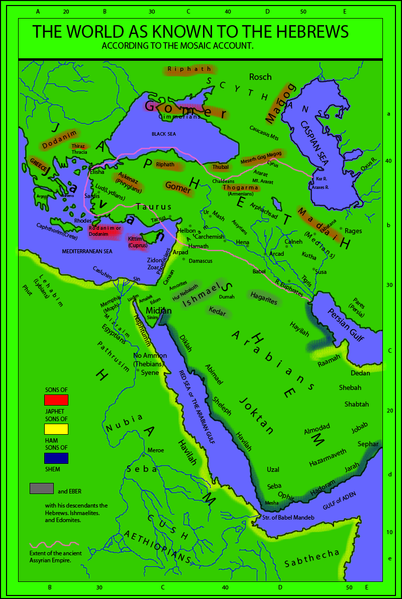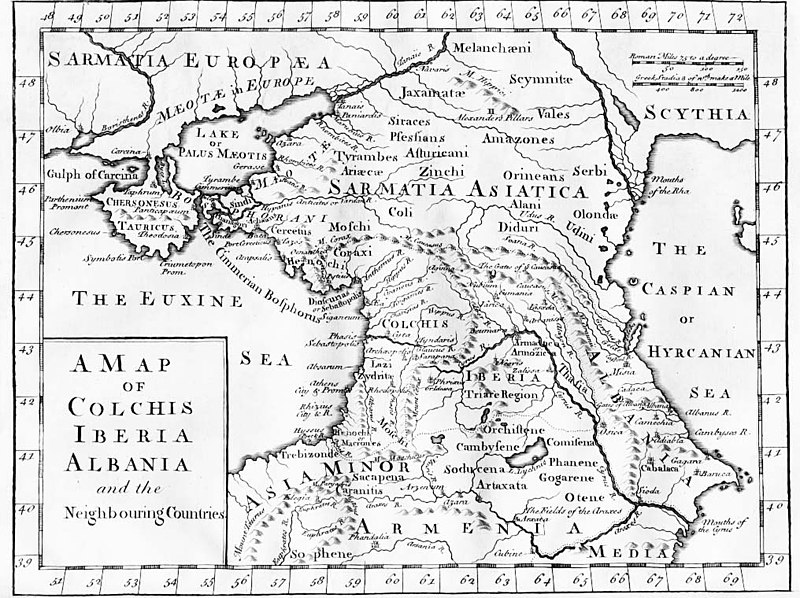Not to dispute, but to clarify: The Haplogroup I among Kurdish people is interesting, in that it tends to be not of the type that we find among Armenians (I2*-B) but of the younger type that we find among Slavs (I2a-Din), indicating that Kurds are not only of largely European stock, but that the transmission occurred recently.
my proposal is that this I2a-Din can be related to conquest of sea peoples from north countries towards south... among sea peoples were Sherdana after whom Serbonian bog is named....
http://www.eupedia.com/forum/showthread.php?26076-sea-peoples
I think this I2a-Din went under names such as Sherdana, Scordisci, Cimmerians (Gomer)...
e.g. if we combine map of Gomer (there is consensus that Gomer = Cimmerians) from ancient Hebrew world (both the island in Cappadocia and areas north of Black sea) with map of archeological sites related to Thraco-Cimmerians we get I2a2 map...
http://en.wikipedia.org/wiki/Japhet
http://en.wikipedia.org/wiki/Thraco-Cimmerians
http://www.eupedia.com/forum/showthread.php?25689-New-haplogroup-I2a-map
now, Gomer/Cimmerians settled in Cappadocia but in Strabo's time both of Cappadocian tribes are called white-Syrians
The country of the Assyrians borders on Persis and Susiana. This name1 is given to Babylonia and to much of the country all round, which latter, in part, is also called Aturia, in which are Ninus, Apolloniatis, the Elymaei, the Paraetacae, the Chalonitis in the neighbourhood of Mt. Zagrus, the plains in the neighbourhood of Ninus, and also Dolomenê and Calachenê and Chazenê and Adiabenê, and the tribes of Mesopotamia in the neighbourhood of the Gordyaeans, and the Mygdonians in the neighbourhood of Nisibis, as far as the Zeugma2 of the Euphrates, as also much of the country on the far side of the Euphrates, which is occupied by Arabians, and those people who in a special sense of the term are called by the men of to‑day Syrians, who extend as far as the Cilicians and the Phoenicians and the Judaeans and the sea that is opposite the Aegyptian Sea and the Gulf of Issus.
2 It seems that the name of the Syrians extended not only from Babylonia to the Gulf of Issus, but also in ancient times from this gulf to the Euxine. At any rate, both tribes of the Cappadocians, both those near the Taurus and those near the Pontus, have to the present time been called "White Syrians,"3 as though some Syrians were black, these being the Syrians who live outside the Taurus; and when I say "Taurus," I am extending the name as far as the Amanus. When those who have written histories of the Syrian empire say that the Medes were overthrown by the Persians and the Syrians by the Medes, they mean by the Syrians no other people than those who built the royal palaces in Babylon and Ninus; and, of these Syrians, Ninus was the man who founded Ninus in Aturia, and his wife, Semiramis, was the woman who succeeded her husband and founded Babylon. These two gained the mastery of Asia; and as for Semiramis, apart from her works at Babylon, many others are also to be seen throughout almost the whole of that continent, I mean the mounds called the Mounds of Semiramis, and walls, and the construction of fortifications with aqueducts therein, and of reservoirs for drinking-water, and of ladder-like ascents of mountains, and of channels in rivers and lakes, and of roads and bridges. And they left to their successors their empire until the time of the empires of Sardanapalus and Arbaces. But later the empire passed over to the Medes.
http://penelope.uchicago.edu/Thayer/E/Roman/Texts/Strabo/16A*.html
clearly, if "Medes were overthrown by the Persians and the Syrians by the Medes, they mean by the Syrians no other people than those who built the royal palaces in Babylon and Ninus" this is clear indication that Syrians = Sumerians
in Cappadocia from Gomer (Cimmerians) we get white-Syrians, who are by interpreting strabo's note = Sumerians...
well, clearly Cimmerians is same tribal name as Sumerians, just written n languages with different phonetic rules......
but story of white-Syrians goes further.... e.g. if we look at this map of haplogroup I (that is based on prior research and should be updated with somewhat higher frequencies of haplogroup I in Kurdistan and lower in sampling point forTeheran area)
we can see that spread of haplogroup I in east Asia maps exactly to Serians/Serres and land of Serica..
Seres (Gr. Σῆρες, Lat. Sērēs) was the ancient Greek and Roman name for the inhabitants of eastern Central Asia, but could also extend to a number of other Asian people in a wide arc from China to India.[1] It meant "of silk," or people of the "land where silk comes from." The country of the Seres was Serica.
http://en.wikipedia.org/wiki/Serica
now area in northwest china plus arc from China to India is perfectly clear in haplogroup I spread....
a part of this arc in fact matches Pasthun Sarbans perfectly (e.g. pay attention on place where both spread make turn of the arc from NW-SE to SW-NE)
modern Serbs (dominantly I2a-din), came to Balkan from land of Boika where they were called white => so we have "white Serbs" as well..
http://books.google.nl/books?id=3al...istrando imperio&pg=PA153#v=onepage&q&f=false
that Boika land that by description - north of Turkia (Turkia is named that was used for nowdays Hungary due to Avar and Hun states) and neighbouring Frankia and white Croatia (roughly Slovakia, south Poland, west Ukraine) can only be Bohemia or land of Boii (hence Boika)
this is supported by increased I2a2 frequencies in southwest Bohemia (2-3 times more than the rest of Czech republic..e.g 14.6% in Klatovy and 9.2% in Pisek compared to around 4% in towns more east and north...see
http://onlinelibrary.wiley.com/doi/1...20500/abstract )
it is also supported by placenames such as Sorviodurum (Straubing) in east Bavaria, and Srby, Srby and Serby in southwest Bohemia
http://en.wikipedia.org/wiki/Straubing
http://en.wikipedia.org/wiki/Srby_(Domažlice_District)
http://en.wikipedia.org/wiki/Srby_(Plzeň-South_District)
the historic source goes further it also states that Boika is the land where they did originally dwell... now Bohemia-Bavaria (both Bohemia and Bavaria were named after Boii) makes lot of sense for origin or early settlement place of I2, as I2b we find mostly north of it, I2a2 mostly east of it, and I2a1 south and southwest of it...
now, back to Serica, Serres and Serians.... white Serians from northern part of arc also still exist as well..
Sart is a name for the settled inhabitants of Central Asia which has had shifting meanings over the centuries. Sarts, known sometimes as Ak-Sart ("White Sart") in ancient times, did not have any particular ethnic identification, and were usually (though not always) town-dwellers.
...
13-th century Mongolian source, "Secret History of the Mongols" states that the Mongols called people from Central Asia, most notably Khwarezm, as "Sartuul". "Sar" in Mongolian means "moon", hence sart or sarta would mean "ones with (flag with) moon", since the Muslim people had Hilal symbol on their flags. One of the Mongolian tribes living in the Zavkhan province are descendants of merchants from Khwarezm, who resided in Harhorin. This tribe, still, is called Sartuul.
http://en.wikipedia.org/wiki/Sart
worth noting is that in Slavic languages word "srp" = sickle, crescent... this is one possible origin of tribal name Srbi... serb coat of arms has 4 "srp" elements...
The modern Uzbek people are believed to have both Iranian and Turkic ancestry. "Uzbek" and "Tajik" are modern designations given to the culturally homogeneous, sedentary population of Central Asia. The local ancestors of both groups - the Turkic-speaking Uzbeks and the Iranian-speaking Tajiks - were known as "Sarts" ("sedentary merchants") prior to the Russian conquest of Central Asia, while "Uzbek" or "Turk" were the names given to the nomadic and semi-nomadic populations of the area. Still today, modern Uzbeks and Tajiks are known as "Sarts" to their Turkic neighbours, the Kazakhs and the Kyrgyz.
white Serians of Asia are thus incorporated in Uzbeks and Tajiks as well...
http://en.wikipedia.org/wiki/Iranian_peoples
Serica proper was in northwest China
Interestingly, the Muslim, Mongol-speaking Dongxiang people of Northwestern China call themselves Sarta or Santa. It is not clear if there is any connection between this term and the Sarts of Central Asia.
http://en.wikipedia.org/wiki/Sart
The Dongxiang are closely related to the Mongolians. Scholars speculate that their identity as an independent ethnic group arose through contact with Central Asians, due to whom the Dongxiang converted to Sunni Islam in the 13th century.
...
Their autonym, sarta, may also provide a contradictory clue to their origin: a similar word Sart was formerly used in Central Asia to refer to Arab traders[citation needed], later to the local (mostly) Turkic-speaking city dwellers.
http://en.wikipedia.org/wiki/Dongxiang_people
those Sart people from Dongxiang Chinese province look like this
the Uzbek and Tajik white Sarts look like this
now, let us not forget Serians mentioned by Seneca as living in both Asia and Europe....
[369] Though kings should gather themselves together, both they who vex the scattered Scythians and they who dwell upon the Red Sea’s marge, who hold wide sway o’er the blood-red main with its gleaming pearls, they who leave unguarded26 the Caspian heights to the bold Sarmatians; though he strive against him, who dares on foot to tread the Danube’s waves27 and (whersoe’er they dwell,) the Serians28 for fleeces famous – ‘tis the upright mind that holds true sovereignty. He has no need of horses, none of arms and the coward weapons which the Parthian hurls from far when he feigns flight, no need of engines hurling rocks, stationed to batter cities to the ground. A king is he who has no fear; a king is he who shall naught desire. Such kingdom on himself each man bestows.
27. i.e. the frozen surface.
28. The poet here conceives of the Serians as near by Scythia.
Seneca - Thyestes
http://www.theoi.com/Text/SenecaThyestes.html
thus, we have Serians who live in both Europe and Asia but are clearly not Scythians
(as in europe they rule over scattered Scythians), nor Sarmatians (as in Caspian highlands they live unguarded from Sarmatians). Only historic tribe in both Asia and Europe that are not Sarmatians or Scythians are Cimmerians...
Seneca's Serians in Caspian highlands map to Serboi /Serbi recorded to live there by Pliny the elder
http://en.wikipedia.org/wiki/Sarmatians
in my opinion I2a2 in Kurds came from north from around Black sea areas with Sherdana sea peoples...
in the end, some parallels between Serbs and Kurds
Kurdish dance is a group of traditional hand-holding dances similar to those from the Balkans, Lebanon, and to Iraq. It is a form of round dancing, with a single or a couple of figure dancers often added to the geometrical centre of dancing circle.
http://en.wikipedia.org/wiki/Kurdish_culture
this is same as circle dance with holding hands that is typical for Serbs and Slavs
http://en.wikipedia.org/wiki/Kolo_(dance)
Catalan version of the dance is called Sardana...
http://en.wikipedia.org/wiki/Sardana
in Turkish language words for wolf are Kurt and Zampara
(from google translate)
similarity of words Kurd/Kurt indicates that Turkish word Kurt might have come to existenc due to Kurds being related to wolf
wolf is (besides eagle) an animal which is related to Serbs...
http://en.wikipedia.org/wiki/National_symbols_of_Serbia
the tribal name Kurd may have been same as Sherdana and Scordisci
note that "Sh" in sherdana and "Sc" in Scordisci were likely both pronounced as š which is sound between "s" and"k" something like in english "shine", "show"...
e.g. Šar planina (Šar mountain) mountain in east Kosovo and west Macedonia is in Greece named Scordus mountain and is named after Scordisci
but if we compare Sherdana with non-Greek names for Scordus mountain, it is clear that Scordisci is Greek exonym of Celtic version of tribal name Shardana....
Scordus in Greek
Šar planina (Šar mountain) in south Slavic
Shar Dagh in Ottoman Turkish
Malet e Sharrit in Albanian
http://en.wikipedia.org/wiki/Šar_Mountains
in fact isn't turkish or Asia minor word Shar Dagh almost the same as Shardana?
in fact, those may have been original Celtic people...
Josephus placed Gomer and the "Gomerites" in Anatolian Galatia: "For Gomer founded those whom the Greeks now call Galatians, but were then called Gomerites."[3] Galatia in fact takes its name from the ancient Gauls (Celts) who settled there. However, the later Christian writer Hippolytus of Rome in c. 234 assigned Gomer as the ancestor of the Cappadocians, neighbours of the Galatians.[4] Jerome (c. 390) and Isidore of Seville (c. 600) followed Josephus' identification of Gomer with the Galatians, Gauls and Celts.
http://en.wikipedia.org/wiki/Gomer
note also that Seneca speaks of Serians (I2a-Din from above) rule over Scythians (R1a from ancient DNA) hence Slavic people as mix of R1a and I2a-Din...
Bavarian geographer writes that state of Zeruiani was so big that all Slavs come from it.... aren't Zeruiani clearly the same as Seneca's Serians (also known as Serres)...aren't they likely same people as Cimmerians / white Syrians? and what about white Syrians / white Serbs / white Sarts / Sarbans / Kurds?














.jpg)


